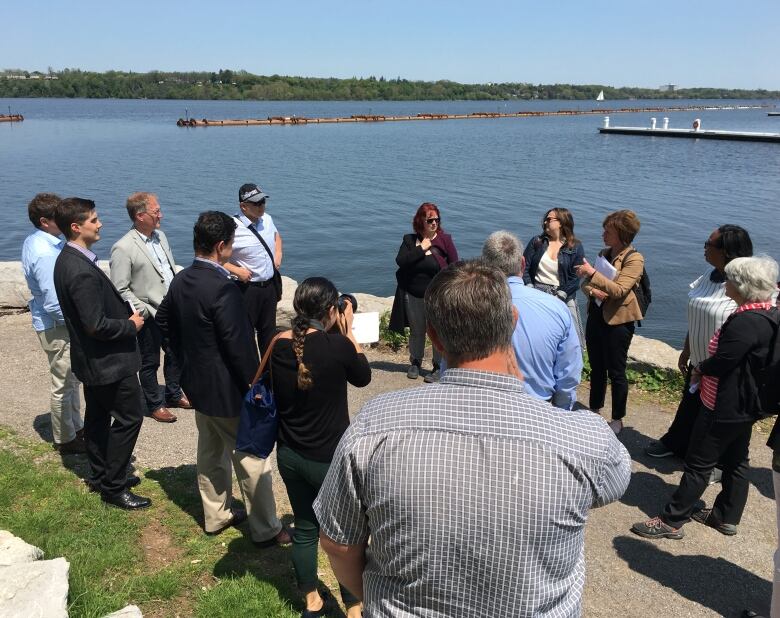Warning that worst-ever algae bloom in Hamilton Harbour could happen annually
U.S. and Canadian environmental experts toured the Hamilton harbour watershed Wednesday

Unless seriousaction is taken, Hamilton Harbour's worst-ever algaebloom could become an annual event, according to a U.S. expert.
John Stark, freshwater conservation director for The Nature Conservancy in Ohio, was one of the experts on a busthat rolled through the bay areaWednesday, before stopping at the city's waterfront for a tour and roundtable discussion aboutfighting back against the environmental concern.
He listened along withother fresh water advocates as Mark Bainbridge, director of water and wastewater planning for the city, described the summer of 2012, where a thick layer of green scum covered almost the entire bay and began extendinginto Lake Ontario.
"Your worst algal bloom could be what you deal with all the time," Stark told the group, citing climate change and an increase in powerful downpours that lead to runoff.

He suggested using data to identify plots of farmland where people are actually losing money, then trying to convince farmers not to plant or fertilize there to cut down on the amount of phosphorus that will leach into area waters.
Other recommendations from experts included public education about what people have to lose if their water becomes toxic and using artificial intelligence and satellite imaging to track blooms when they do occur.
The tour came about a week after a report to Hamilton's Board of Health that stated that despiteyears of cleanup efforts, the city might be better off turning the harbour's BayfrontPark beach into a wetland because of the "blue green algae issue," and other problems.
Officials in Hamilton shared their strugglewith the group and described their efforts tofight the blooms, such as usingfertilizerswithoutphosphorusand investing in area waste water plants to limit the amount of nutrients that end up in the bay.
"It's nice to know you're not alone in a problem," said Kristin O'Connor from the Remedial Action Plan for the harbour.
"To have experts, even from another country, come expands our network so when other issues come up we have a greater network to rely on."

U.S. Consul General Juan Alsace organized the tour as a way to buildrelationships between experts in both countries given the many shared issues along the Great Lakes.
Hesaid thekind of cooperation and learning O'Connor describedexactly what he hopes will continue even after the tour ends.

"If you look back at history people tend to come to an agreement because water quality is such an important thing for humanity," he said. "There's an issue here that needs to be addressed."












_(720p).jpg)


 OFFICIAL HD MUSIC VIDEO.jpg)
.jpg)



























































































